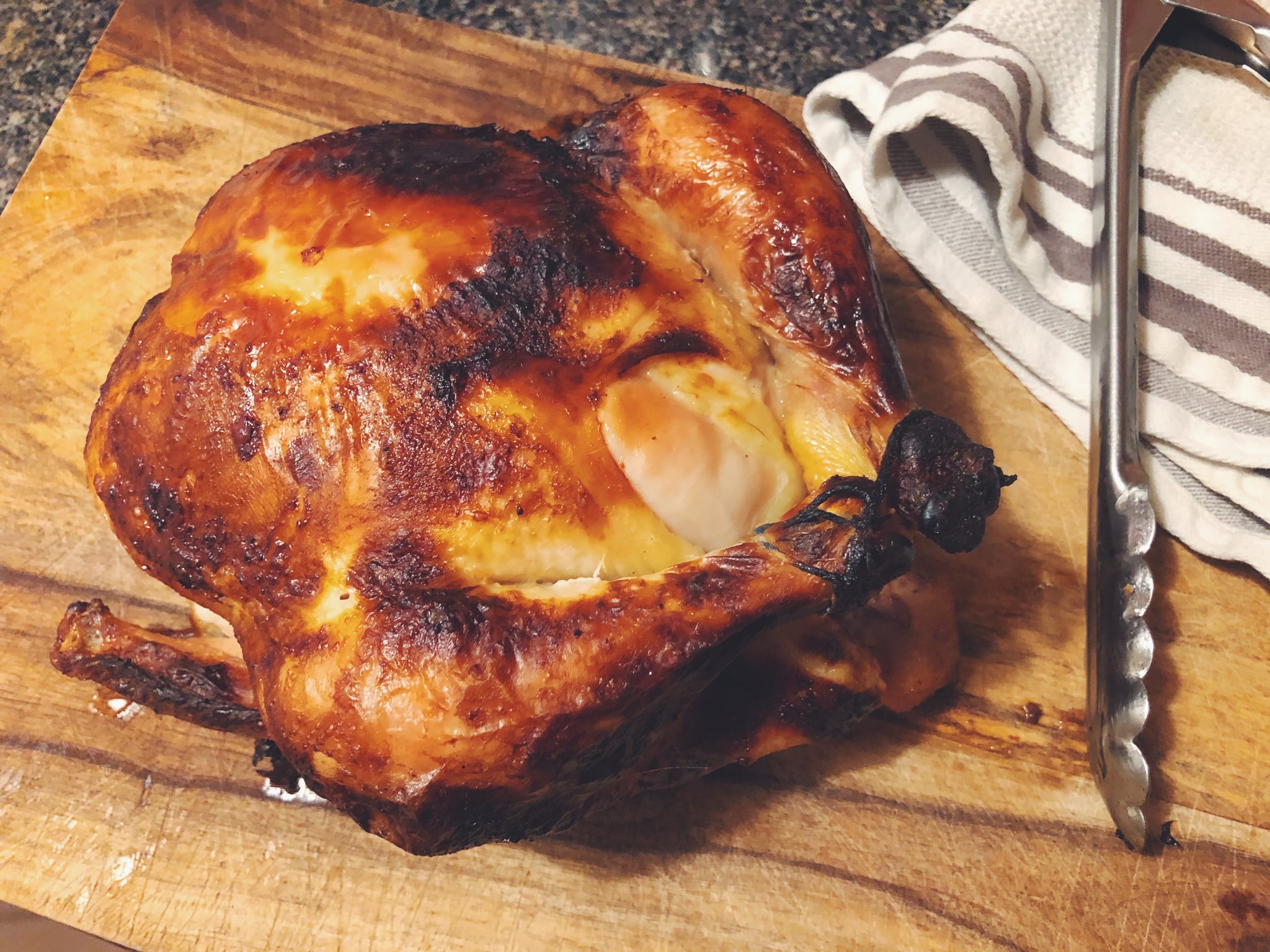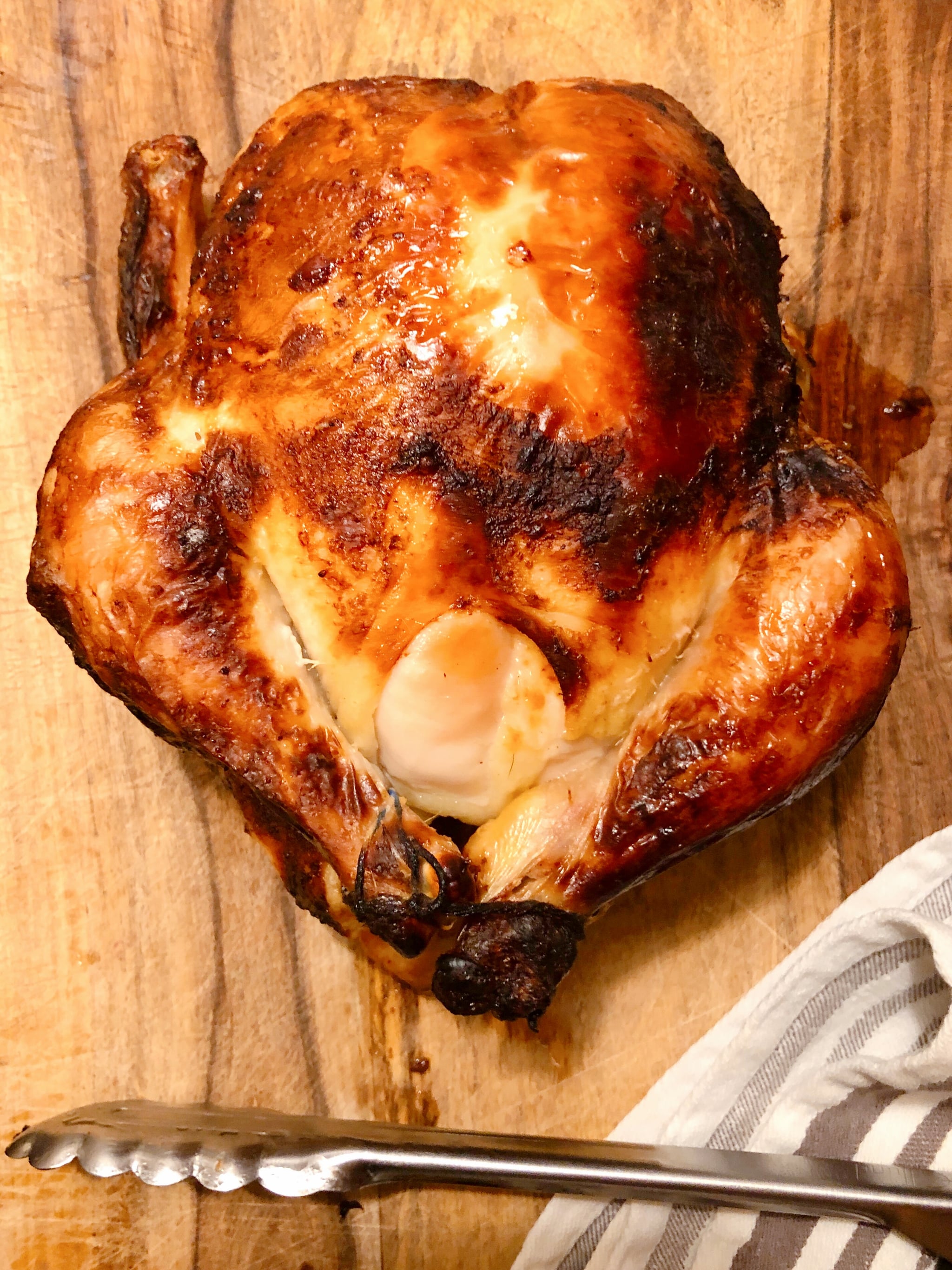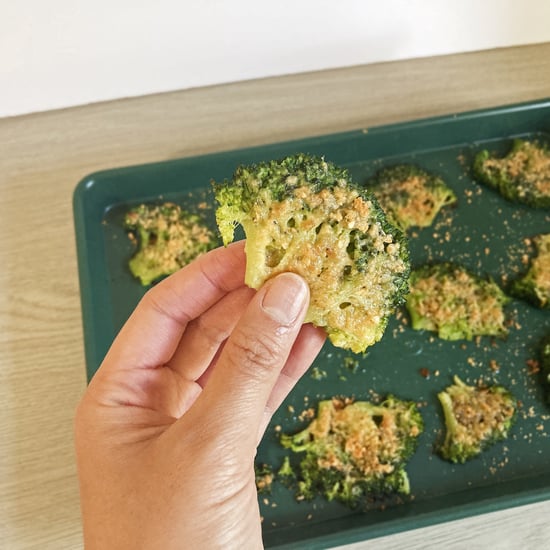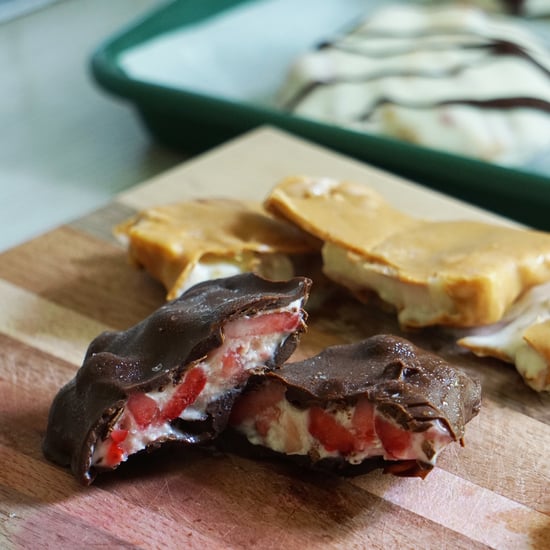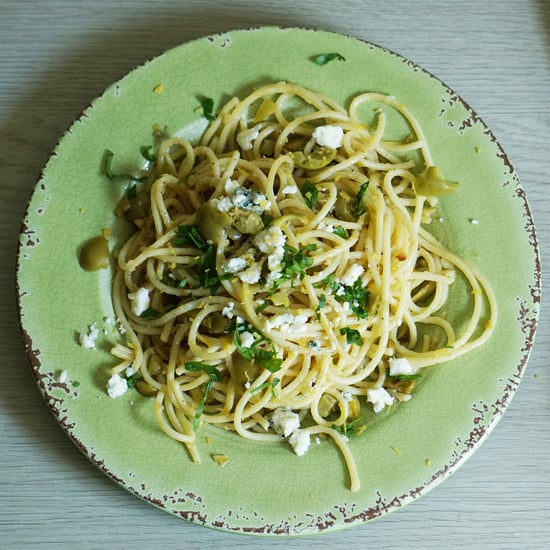Samin Nosrat's Buttermilk-Marinated Roast Chicken Recipe
You'll Never Look Back After Trying Samin Nosrat's Buttermilk-Marinated Roast Chicken
Has a roasted chicken ever really made me want to tell everyone I know about how mind-blowingly satisfying it was? Not until now. After years of making subpar chickens, I recently tried Samin Nosrat's Buttermilk-Marinated Roast Chicken, and I will never look back. Not only is it super easy to make, but it's also by far the juiciest, crispiest, perfectly salty chicken bursting with flavour that I've ever made or eaten.
In American Cookery, author James Beard writes, "A perfectly roasted chicken is as fine a dish as one can have. However, it is all too seldom perfect." Not an encourageing sentiment when setting out to make a spellbinding chicken, right? Well, that's where Nosrat comes in. While her four-part Netflix docu-series, Salt Fat Acid Heat, was released back in October 2018, I recently watched it and was intrigued when the series culminates with her roasting this chicken for a dinner party. "If there were a single recipe to really sum up the lessons of Salt, Fat, Acid, and Heat, it would be this buttermilk-marinated roast chicken," she says while pouring buttermilk over a whole chicken inside of a gallon-sized resealable plastic bag.
With only three ingredients — a chicken, salt, and buttermilk — I cautiously gave the recipe a chance out of the sheer simplicity of it all. That, and the fact that it takes just 35 minutes to prep (hands-off rest time takes 18-to-24 hours, and cook time is one hour).
One of the biggest hurdles I've faced when it comes to roasting chicken is it being under seasoned, which routinely produces mediocre chickens. The one component of seasoning I've been missing this whole time? Rest time! You want to salt the chicken and let it sit. Whether it's a dry rub or a wet brine, letting the chicken absorb the salt and tenderize the meat is going to make all the difference in the outcome. This recipe blends both methods perfectly, and cannot be overstated. Do you want a "Maybe I'll just shred this up and throw it in something else later" chicken? Or do you want a "I'm going to stand over the counter and eat this straight out of the oven" chicken? Salt and time is the key.
The buttermilk in this recipe adds moisture and acid to the chicken for a perfectly balanced tang. The sugars in the buttermilk also lightly caramelize to add a little extra crispiness to the chicken skin, which is absolutely irresistible.
Next time I may add some crushed garlic, pepper, and fresh herbs to the buttermilk brine if I have them on hand, but it's going to be hard to improve on perfection.
Samin Nosrat's Buttermilk-Marinated Roast Chicken
Ingredients
- 1 whole chicken (3.5-4 pounds, preferably organic)
- 2 tablespoons kosher salt, plus more to generously season
- 2 cups buttermilk
Directions
- Prepare the chicken the evening before you want to roast it. Snip or cut off the wing tips with sharp kitchen shears or a knife. Generously salt both sides of the chicken with kosher salt, and let rest for 30 minutes. (Save the wing tips if you plan to make stock later with the rest of your chicken bones.)
- Meanwhile, whisk together two tablespoons of kosher salt and two cups of buttermilk. Allow the salt to dissolve into the buttermilk while the chicken is sitting. Give it one more stir before combining it with the chicken.
- Put the chicken into a gallon-sized plastic freezer bag, and pour the buttermilk brine over it. Push out as much air as possible and seal it up. "Squish" the chicken and buttermilk together in the bag, and refrigerate it for 18-to-24 hours. If you don't have a plastic bag large enough for the chicken, you can put it in a large bowl and cover with cling film. Flip the chicken halfway through marinating for an even brine.
- Pull the chicken out of the refrigerator an hour before you want to start cooking. This helps the chicken come to room temperature before going into the oven, and reduces the overall cooking time and allows the chicken to cooking evenly. Move the rack to the centre of the oven if you need to, and preheat to 425 degrees.
- Remove the chicken from the plastic bag and wipe off the dripping buttermilk with your hands. A wet coating of buttermilk is fine, as long as it's not dripping. Place the chicken back-side down in a cast-iron skillet or sheet tray with a roasting rack. Using string or baking twine, securely tie the legs of the chicken together at the ends of the drumsticks.
- With the legs facing the back of the oven, move the chicken to the back of the rack, legs pointing toward the back left corner of the oven. Bake for 20 minutes, then reduce to heat of the oven to 400 degrees.
- After 10 more minutes, check the colour of your chicken and rotate the pan so the legs are pointing toward the back right corner of the oven. You're aiming for even browning over the whole chicken.
- After 30 more minutes, check your chicken to see if it's nicely browned all over. To check if it's done, you can gently slice the leg from the thigh and see if the juices run clear, or take the temperature of the chicken where the thigh meets the body of the chicken; it will register 165 degrees when it's done. (To be honest, the leg of my chicken was so tender, I was able to pull it right off.)
- Finally, let your chicken rest for 10 minutes. Using a pair of tongs to grip the cavity, move your chicken from the skillet to a cutting board while it's still hot. While it rests, the juices will redistribute back into the chicken for the juiciest possible result. Don't worry if a little liquid drains on the cutting board though. Slice it up and savor every bite!
